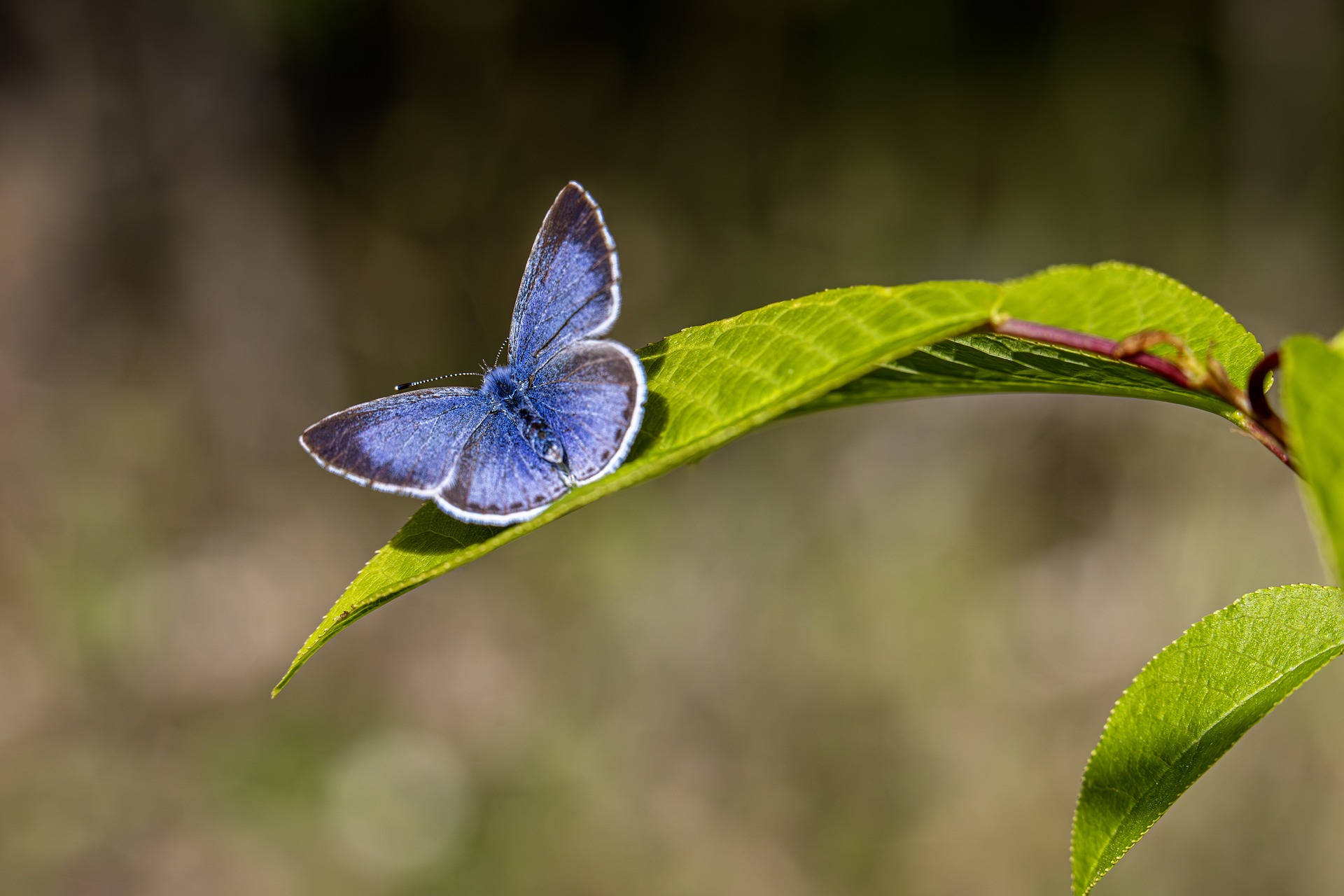The Holly Blue (Celastrina argiolus) is a butterfly species belonging to the family Lycaenidae. Here are some key features and characteristics of the Holly Blue:
- Appearance: The Holly Blue butterfly has a wingspan of approximately 25 to 30 millimeters (1 to 1.2 inches). The upper side of the wings in males is pale blue with a thin black border, while females have a broader black border with blue scales near the body. Both genders have white fringe on the wings. The undersides of the wings are pale gray with black spots and a row of orange crescents along the hindwing margin.
- Habitat: Holly Blues inhabit a variety of habitats, including woodlands, hedgerows, gardens, parks, and urban areas. They are commonly found in areas where their larval host plants, particularly holly (Ilex spp.) and ivy (Hedera spp.), grow abundantly.
- Distribution: Holly Blues are distributed throughout much of Europe, including the British Isles, where they are widespread and common. They are also found in parts of North Africa and Asia.
- Lifecycle: The lifecycle of Holly Blues consists of egg, larva (caterpillar), pupa (chrysalis), and adult stages. The female butterfly lays eggs on the buds and flowers of host plants, especially holly and ivy. The larvae feed on the flowers and developing fruits of the host plants before pupating and emerging as adults.
- Feeding: As adults, Holly Blues primarily feed on the nectar of flowering plants, using their long proboscis to extract nectar from deep within the flower. They are known to visit a wide variety of flowers, including species such as dandelions, primroses, and brambles.
- Behavior: Holly Blues are relatively weak flyers and are often seen fluttering low to the ground among vegetation. They have a rapid, darting flight pattern and may be difficult to approach when feeding or resting. When at rest, their wings are usually held together over their back, with the undersides often facing upwards.
- Conservation: While the Holly Blue butterfly is not considered globally threatened, certain populations may be at risk due to habitat loss, fragmentation, and changes in land use practices. Conservation efforts focused on preserving and restoring suitable habitat, including the management of woodlands and hedgerows, can help support populations of this butterfly species.
Overall, the Holly Blue butterfly is a beautiful and ecologically important species valued for its beauty and role in pollination. Its presence in diverse habitats adds to the biodiversity and natural beauty of the landscapes it inhabits.
Visited 228 times, 24 visit(s) today
Views: 368
Subscribe to the newsletter:
